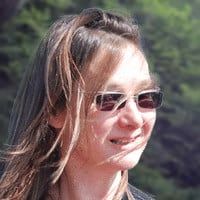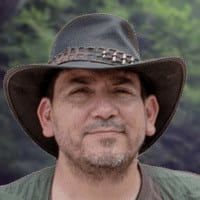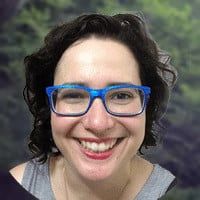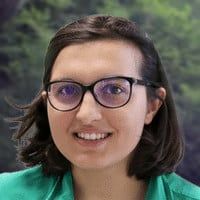Anne Murray
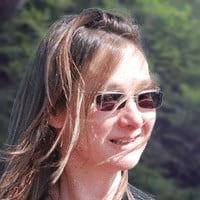
Exhibitions of her work in Turkey, France, Italy, Hungary, Spain, China, Belgium and many other places around the world.
What is ‘art’? Why do we need it? How have artists throughout history been drivers for social change, and how can they continue to be so in a world that’s rapidly changing?
Anne Murray, a nomadic artist and curator, spoke to Traces.Dreams about her work connecting artists around the world through her platform Cloud Conversations. As an artist herself, Anne has exhibited her work globally, and is passionate about helping artists to tackle issues such as racism, misogyny, homophobia, islamophobia, and other social concerns in their work, by setting up spaces where they can communicate with each other and grow.
For her, art serves many purposes, from helping people to see they aren’t alone, to giving a voice to the feelings we all have as human beings. Through Cloud Conversations, she’s preoccupied with how people can use their knowledge and experience of art to look beyond current world situations, find solutions, and help to create dialogues for change.
Watch the video to find out more, and join in the conversation.

Anne: My name is Anne Murray and I’m an artist and a curator. I’m working on the curatorial research project that is called Cloud Conversations. I am a nomadic artist. So, I don’t really have a home base but mostly I return to Barcelona. So, I guess that would be my home base.
Nerina: Could you tell me more about this project?
Anne: Yes. The project is connecting artists from different parts of the world, they’re working in different disciplines, different media from: video art, photography, painting, sculpture, installation work, music, all different kinds of art forms and they’re working on different themes. The themes are to do with xenophobia, sexism, racism, Islamophobia and all kinds of global issues including climate change.
Nerina: How did you become an artist?
Anne: I don’t know if I would say that I became an artist. I would say that always throughout my life I was very curious and reflective and I spent a lot of time isolated, alone, just creating things and people started to call me an artist and that’s how it happened. And how I became a curator was really I had an interest in connecting different artists together because I saw that when you put the different artists’ work together it’s like the work itself has a conversation amongst other works. I thought it would be interesting to start to connect the artists and have them have conversations and it stimulates new work and also makes artists feel like they are not alone. They’re working in different parts the world on similar themes and they feel bolstered by that, they really feel more support.
Nerina: Are there some moments or some experiences that really determined or influenced who you are now?
Anne: I was the only girl, I was the youngest and as I said I spent a lot of time alone because also my brothers were a lot older than me. I think that when you live like that you spend a lot of time reflecting and thinking and kind of developing different ideas. My father read poetry at the dinner table a lot and I really loved poetry and I guess that really influenced my development of the way that I thought and interacted with the world and reflected upon it.
My father died when I was 13 and I think that that really changed my life a lot because it made me realize how important it was to actually seek the things that you really care about and to try new things that you’re afraid of because life is short and it really made me aware of that and aware of the fact that the only thing that we can really rely on and count on in life is change. Things will change, people will live or die, or nature will change, everything around you will change and once you embrace that it really makes life a bit simpler and easier. Because even if you’re in the most difficult turmoil you know it can’t happen forever.
Nerina: Who are you as an artist?
Anne: I create video poetry. So I often go to different countries, staying in artists residencies. I make proposals for different ideas that are related to different things that are going on in current events in those countries, sometimes political issues, sometimes more personal issues and I write poetry. I record my voice and I put that together with imagery and the imagery often has an abstract connection to the words so it leaves room for interpretation and room for a bit of your own interaction, what you bring to it. It’s a little bit more free. It’s not so determined like a play or a movie it gives you a chance to enter into it and leave and enter again like poetry itself. I feel like poetry when you read a line and you read it again you see it in different ways each time you experience it and that’s what I’m looking for in my work.
Nerina: Why video poetry? What does video add to poetry?
Anne: I have always been as well a visual artist as a writer and so it came about naturally. I mean I started I was doing really large-scale drawings, painting on drawings and I started just writing phrases. I didn’t really think of them as poems at first but they became poems and I realized later of course because of my dad I had been exposed to a lot of poetry. Eventually I took… in my very last semester of graduate school, I took a video class and I made my first video poem then and I really loved that combination of things. It really for me it gave me everything I needed in the experience of creating a work.
Nerina: You are a nomadic artist. Why nomadic?
Anne: It is a good question. I think that what happens when you live in different kinds of environments you’re constantly challenged and challenged in a way where you have to see yourself from the outside and the inside at the same time. Because you see the reflection of yourself in other people; how they react to you, how you behave and you start to have to accept that not all things are the same and your way is not right. It might work in some places, but it doesn’t work in all places and I really, really enjoy this metacognition and having an awareness and making changes and it really sparks my ideas tremendously about how I want to create work. I am fascinated by the interaction that I’ve had with so many different people from different cultures. I feel that it is expanded my mind tremendously. That you actually have many different options as a human being about how you’re going to interact with people, how you’re going to depend on them, how you’re going to you embody and embrace the idea of working as a community and I love it, I love that. So that’s why.
Nerina: Is there a place where you have felt a special connection to?
Anne: Most recently I was just in Algeria and I really loved it. I was there for the Mediterranean Biennial of Contemporary Art in Oran. I had a work exposed there and I was really impressed by the generosity of people and their curiosity and also that they really felt it was important to understand from the artist what their intentions were and they asked a lot of really great questions when I was at the exhibit. It was very inspiring as an artist because often you can have an exhibition and maybe people come to an opening and they’re a little bit afraid to ask questions. Maybe they are intimidated by the art world, but I didn’t find that there. I found there was a thirst for knowledge and a thirst for an idea of what art could be and how far it could go and how it could connect to their own lives and I loved it.
Nerina: Which was the question that impressed you the most?
Anne: Somebody asked me about how I came up with the idea for the piece that I showed. The piece that I showed was called Exquisite Exodus and they really wanted to know why personally I had made the choices of the poem; the things that I said in the poem. Because in the poem I talk about the blue sky and it being a point of reference and something that makes me feel a sense of home.
Because the pieces about the Exodus of course from Syria and it’s relating my own life and my own experiences to what people go through when they have to leave there homes. I was thinking about having lived away from any sort of home for many years and traveling from one month to the next to do these projects of what is my focal point, where was the place where I call home and what can remind me of that and what would it be for somebody who had lost everything that was their home. Even the buildings, the cities are destroyed in Syria and so I thought it’s the blue sky.
When you look at the blue sky from anywhere in the world you can feel a sense of the grander scale of things and a sense that you have some constancy and some degree of change. So that for me gave me a sense of home and I related that to what perhaps if you are someone who has lost her home what you might think of or look at to have a sense of security.
Nerina: Why do we need art?
Anne: This is probably the biggest question every artist asks themselves, and many people and communities ask. I think that art serves many purposes and it can function in society in a lot of different ways.
For myself the way that I’ve started to use art is to help people to see that they aren’t alone, that there are connections between things, to give a voice to the feelings that we have as human beings that we often have trouble expressing and that we can relate to when we in theater and music and visual art. When you see those feeling expressed you can expel them and you can move onto the next thing and really that cathartic element of art is very, very crucial.
But another element of it is also how you can use your knowledge and your experience of art to look beyond current situations and to find solutions. Because art can connect people, you can create community projects and you can connect artists from across the world and find solutions for problems. Problems such as: xenophobia, sexism, racism. How do we address these problems? Artists find creative ways to do that and to create dialogues and so art serves a purpose where we have a gap in society.
Where there are many things that we look at in the media and we feel helpless. What can we do or what do you do? This is just human beings. These are just things that happen over and over again in history. It’s not true. Actually, if you look at history it’s often people who have looked at things from the outside, from a bit of distance, from a creative effort in any way with some different sense of logic that have created a way and a path towards change. So art’s purpose really is to create change and to embrace change.
Nerina: What is the most important lesson that you’ve learnt from this project?
Anne: The most important lesson that I have learned is to have compassion, to really understand what it is to be compassionate. From living in different cultures, from experiencing different cultures and creating works that are related to a whole different cultural background in different countries I have learned so much about compassion. About how when we see things and perceive things the window that we are looking through can be very narrow and that compassion is actually looking at something from multiple windows and that that’s really beautiful.
Nerina: Where do you see yourself in 10 years?
Anne: This is a tough question. But of course I would like to have a pavilion at the Venice Biennial and I think I would like to have an in four years. Maybe that’s not enough time and after that I hope that I will still be working on this project; the Cloud Conversations research and doing curatorial work and also as a fine artist: as a video artist, a video poet. I hope to be in different museums around the world.
I want to be an artist like Marina Abramovic. I really admire her work. I got to meet her recently at the Serpentine Gallery. It was actually about three years ago, but it really impressed me. Her compassion and her kindness and actually we both cried when we met. She hugged me and she handed me a tissue. I was so amazed and I thought wow you know when you become a star, an artist star it doesn’t have to mean that you lose your sense of self and your sense of kindness and that really gave me the drive to keep going and to feel that I could also be one of these great artists in this century.
Nerina: Why is she your hero?
Anne: You know, at first when I was younger I didn’t understand her work. I thought maybe it was a bit crazy you know to allow people to take weapons and cut her. Like she put them out on the table and people had the option to do whatever they wanted to her in one of her performances and I didn’t really understand and now I completely understand. I think that to expose yourself, to be as vulnerable as possible to humanity is probably the bravest thing that you could ever do and the biggest trust and faith in people and that’s why.
Nerina: What keeps you going? What motivates you?
Anne: Sometimes it’s hard to keep going but I have this incredible drive. I think I have this passion that it’s unstoppable and the more momentum I gain the more I keep going. There’s a lot of times when I realize that people come to me there is a moment when maybe I feel like it’s a little bit too hard and always, always there’s somebody who comes to me and says something about how meaningful what I’m doing is and how important it is and it’s like a treasure.
Nerina: What kind of society do you dream of?
Anne: I want everyone to have that openness to experience life and to accept that all the different perspectives are important, and because of that you can experience life with the utmost richness, a depth beyond anything you can imagine.
Nerina: There are people who say that they do not understand art or they do not understand poetry. What would you tell them?
Anne: Every piece and every moment is a piece for you to experience. Because for myself there has been work like I talked about Marina Abramovic’s work. When I was younger I didn’t have the life experience really to even understand what she was doing and a huge part of that wisdom that comes from your life experience is what helps you to access and understand and indulge in art. It’s something that you indulge in, that you take a moment and it’s like eating chocolate. It’s like you can take that richness in and remember it and it’s not for everyone at every moment but there is something to be taken from art for everyone.
It’s just that you have to accept and understand that perhaps you need to also give something in the experience of looking at a piece of art, as a viewer you have to read and educate yourself and understand and try to look at what’s the perspective, the context of a piece of work is. Like reading a book the literature that you read you look at what country the person was from, what with her political situations, what was the culture like when a book was written. You have the whole context of life experience it’s the same with any person when you meet somebody. A lot of people maybe you like right away but then there are other people who are more quiet and you’re not sure, and those sometimes are the people that you really should spend time with because they have so much hidden inside and it takes time to know them and a piece of art is like that. You need to spend time with it like you would spend time with a child or a friend or a grandparent.
Nerina: Why are you doing what you are doing? Why are these kinds of connections of artists so important?
Anne: It’s interesting because when I was in art school I didn’t feel this. I felt that a lot of times our differences were highlighted as artists instead of our connections. When you finish school and then you go out into the world and you’re alone in your studio it’s hard, it’s a difficult process to then connect and understand things. And I think that it really helps artists when they connect with each other, when they see how they see things, how they examine things, how they reflect on the world is similar and that those things can as a community working from around the world create and can be a catalyst for change in the world, for society, for good in the world.
I mean, of course, you can use it for something negative too; it’s a very powerful thing to create a piece of work. We know that, we see that, we see how in some countries artists are put in jail for creating a painting. It’s happened in Turkey to a young woman. She also got almost three years in jail for doing a painting. Art is powerful. It’s something that we know it’s powerful because it taps into and connects with something that’s so much from inside our humanity of the core of who we are as human beings, it taps into our emotions, our life experiences, all of the things that we care about and because artists are alone in creating we need to help them. We need to give them the chance to connect with each other so that they don’t become too fearful and give up or die you know from lack of attention really. It’s so important because they are like the shamans of society, they can bring to us something that we wouldn’t have in our lives without them.
Nerina: Why does Anne need poetry?
Anne: I need it because without it I have no way to express my life experience and I feel this need. Perhaps it’s a human need, maybe it’s a selfish need or something that we need to capture our life experience and give it some kind of precious attention. So when I create a poem it’s sort of like a talisman. That talisman holds within it my feelings, my emotions, my perception at a particular point in my life that I can go back to again and I can feel it again and I can feel it in the same way that I felt it in that moment and otherwise I can’t.
You know, when I look at a photo it doesn’t have quite that quality but with words I feel it. Because I’m very, very selective about my words and there’s a richness in poetry that is very visual and it can capture the vision of an experience, the essence of something for me in such a powerful way that I really treasure being able to read it again. So that’s why.
Nerina: Is there a poem that you like in a special way?
Anne: Perhaps I can read something. Can we stop then I can take the line?
Nerina: Oh, please it will be great.
Anne: Yes, I’ll read a line from a poem it’s called A Weary Thing It Is. It’s about the boundary between love and friendship and kind of questioning that.
Exhibitions of her work in Turkey, France, Italy, Hungary, Spain, China, Belgium and many other places around the world.
